
Exactly 35 years ago, on September 13, 1985, the game was released, which for many years defined the shape of the industry and laid the foundations of the platforming genre. The games, which brought fabulous profits to Nintendo and clearly proved that saving princesses is within the power not only of knights in shining armor, but also of ordinary plumbers. In honor of this significant date, we have prepared for you material about a series of amazing events that gave the world one of the most charming characters in the history of video games.
Only business and a little personal
On April 30, 1934, a long-awaited child was born into the family of Italian immigrants Louis and Rina Segali, who lived in Seattle, Washington. In 1952, Segali Jr. graduated from high school, after which he worked for 5 years in one of the local construction companies, and in 1957 decided to start his own business in the field of urban development and road construction. At the start, the future MA Segale Inc. consisted of only two employees (Segali himself and his wife Donna), however, thanks to the hard work of a married couple, the company gradually transformed from a small office, which had a single pickup in its assets, into one of the largest regional contractors, and in 1998 the company became part of a large Irish concern CRH plc, becoming part of its subsidiary Oldcastle Materials, based in Atlanta.At that time, the aggregate value of MA Segale Inc. reached 60 million US dollars.
Doing business in such a competitive niche required a lot of cash injections, so Segali simultaneously mastered related industries in order to obtain additional funds that could later be invested in the development of MA Segale Inc. One of these areas was the rental of warehouse space in the suburbs of Seattle. The occupation turned out to be quite profitable, although it gave the businessman a lot of trouble: Segali regularly had to deal with careless tenants who did not want to fulfill their financial obligations in a timely manner.
One of these stories happened in 1981. A small Japanese arcade machine manufacturer set out to conquer the American market and rented a spacious warehouse from Segali for its products. Alas, her debut game suffered a complete commercial failure, which led to an inevitable delay in rent. Segali then personally met with the head of the American branch and strictly reprimanded him directly in front of his subordinates, but in the end the parties managed to come to a mutually beneficial agreement: the company received the necessary respite, thanks to which it was able to improve its financial situation and pay off all its debts in full.
Hardly anyone could have guessed that the entrepreneur's favor would play a decisive role in the emergence of the video game industry and lead to the emergence of the world's most popular platformer character. After all, the negligent tenant was none other than Minoru Arakawa, president of Nintendo of America, and the businessman who kicked him - Mario Segali, in whose honor the world famous plumber later received his name.
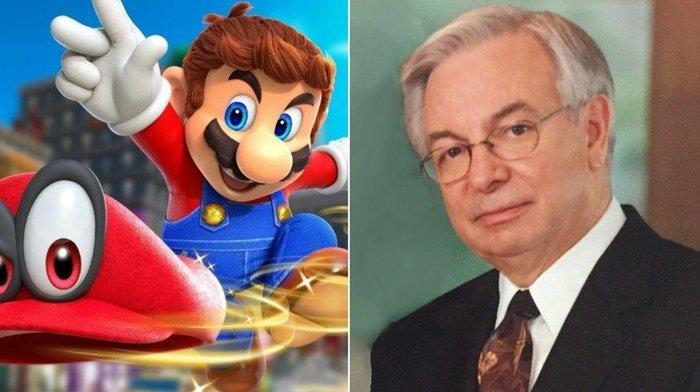
Mario Segali and his virtual protagonist look little alike
Survival game: from Donkey Kong to Super Mario Bros.
The very appearance of a moderately well-fed mustachioed short man in his prime is the result of a whole series of compromises and coincidences. Nintendo's debut on the American slot machine market was truly a massive flop. The hugely popular in Japan arcade shooter Radar Scope (a variation on the Space Invaders theme), on which the company relied heavily, failed miserably. Of the 3 thousand slot machines brought to the United States (the entire batch had to be ordered in advance from Ikegami Tsushinki, since Nintendo itself did not have sufficient production capacity), only about a thousand were sold, and the rest continued to gather dust in that same ill-fated warehouse.

In such a situation, the most logical (and safe) for Nintendo would be to admit defeat and focus on the domestic market, but Minoru Arakawa was able to convince his stepfather Hiroshi Yamauchi, who headed the company at the time, to take a risky step and invest in creating a new game. Since the company sorely lacked professional game designers, the then completely green Shigeru Miyamoto was approved for the position of the project manager, on whose account was participation in one and only project (and then only in secondary roles) - the very Radar Scope, which is so cool met by the Americans.
However, this decision turned out to be absolutely correct: it was Shigeru who was able to create a true masterpiece, from which Nintendo's triumphant ascent to the Olympus of the gaming industry began.
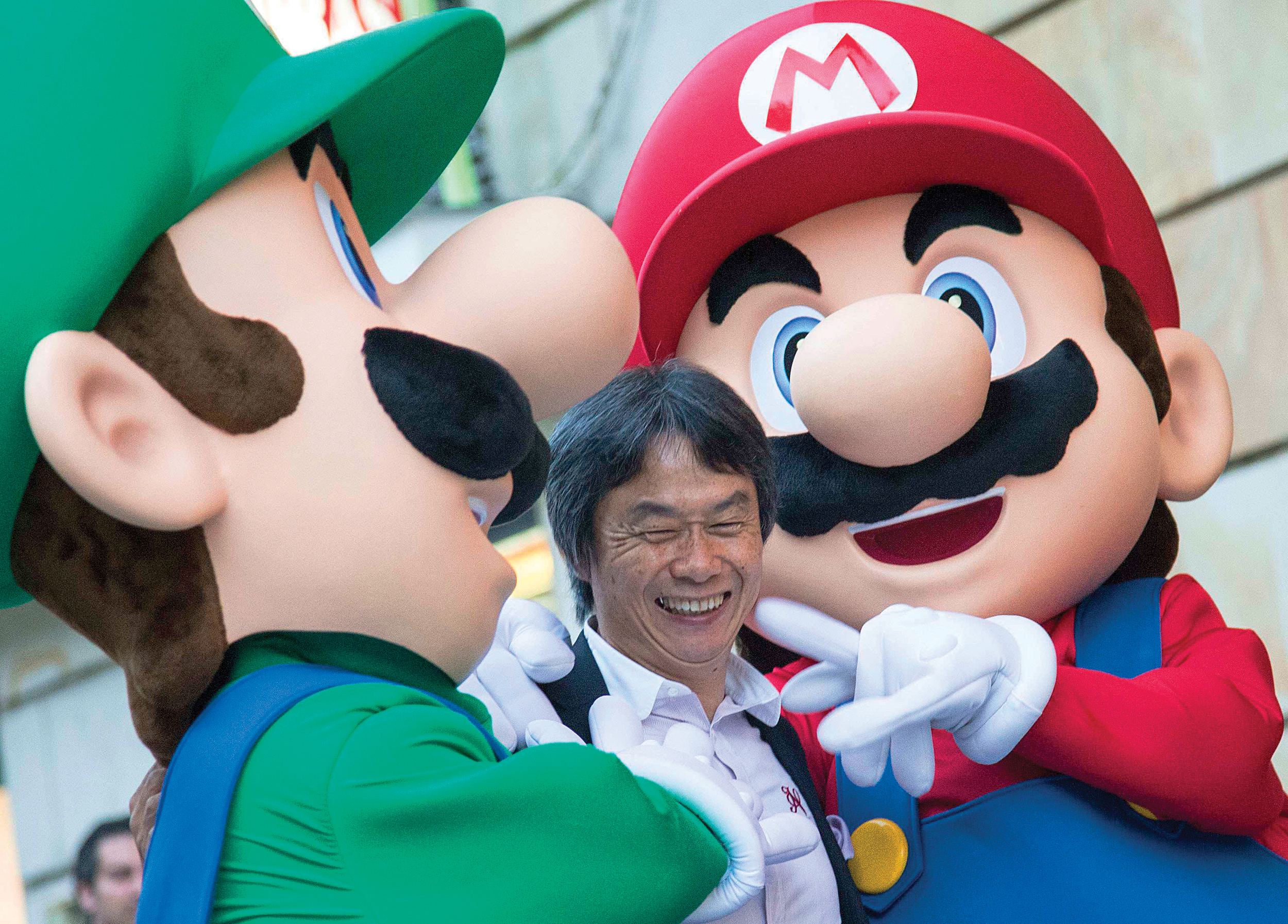
A happy family: Shigeru Miyamoto, surrounded by his "children" - Mario and Luigi
Miyamoto's inexperience in game design ultimately determined the concept of the future project. At that time, when developing games, it was fashionable to borrow individual episodes from action films, be it chases, shootouts or battles with aliens. However, Shigeru wanted to create a more holistic product that could tell a short, but self-contained story within the framework of an arcade video game. Yes, as strange as it may sound, but the future Donkey Kong was largely about the plot, thanks to which it was able to win the hearts of players.
Although at first there was no talk of any giant gorilla, but the main characters of the game were supposed to use the characters of the comic book and the cartoon of the same name about Popay. According to the original idea, the role of "damsel in distress" (by the way, this trope was used in a video game for the first time) was played by the sailor's beloved Olive Oil, and the main antagonist was to be the thug Bluto. However, the King Features Syndicate, which owned the rights to the characters, turned down Nintendo, considering the venture not very successful. And she regretted it after just a year: against the background of Donkey Kong's success, the company nevertheless gave the project the green light, and in 1982 the game Popeye was released, which had a similar concept, but, alas, it was not destined to gain world fame.
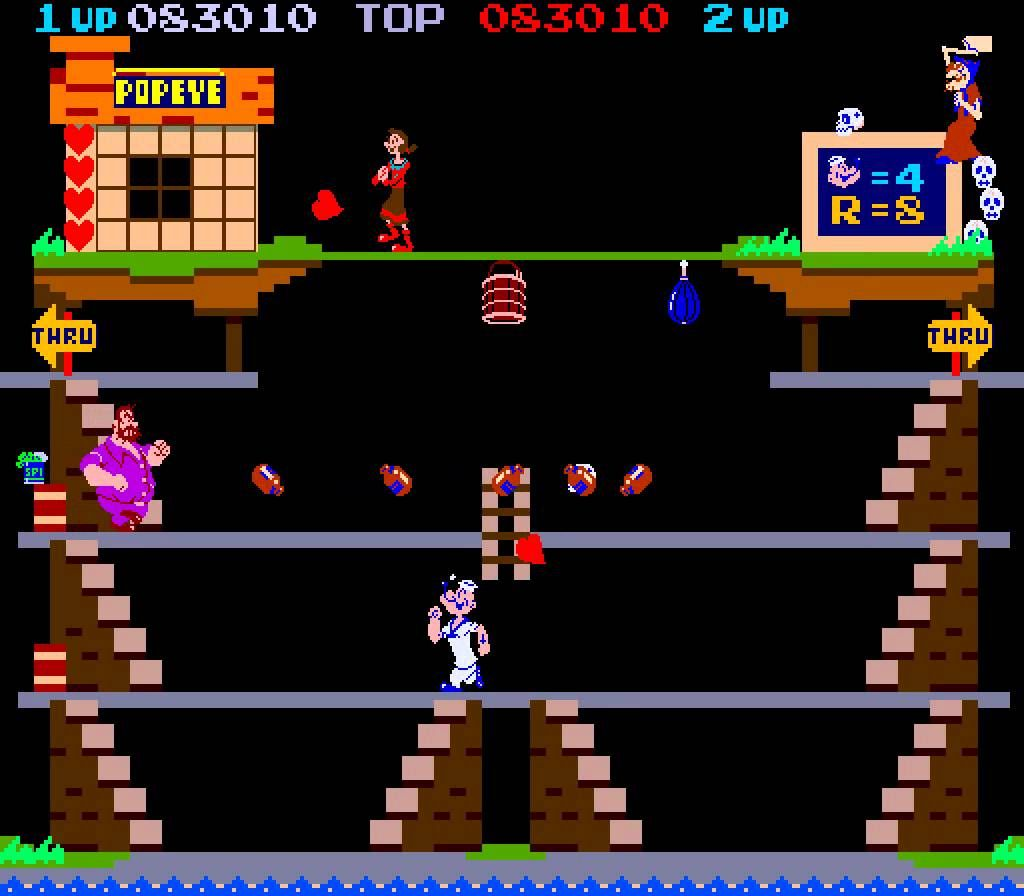
After the King Features Syndicate's rejection, Miyamoto found inspiration in the 1933 motion picture King Kong. In fact, the plot of the game was a rethinking of the final scene of the film: a distraught primate of gigantic proportions climbs the scaffolding, clutching the beautiful Paulina in his paw (namely Paulina, and not Princess Peach, as many believe), and the player takes on the role of a brave carpenter who must, bypassing all obstacles, save his beloved.

Advertising poster for the original game Donkey Kong
The concept turned out to be ingenious in its simplicity: the whole plot fit on one screen and did not require any special expressive means or explanations. The player could immediately understand how much: here is the main enemy, here is the beauty who needs to be saved, and here is our protagonist, on whose shoulders this difficult task is entrusted. The plot of the game was extremely simple, but it was notable for its integrity and completeness.
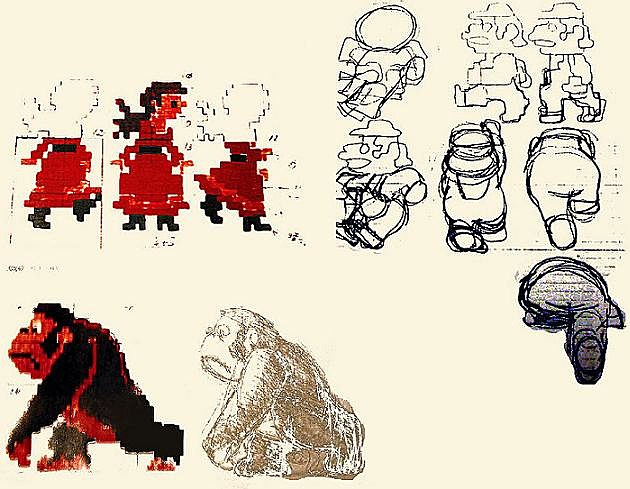
Donkey Kong concept art, drawn by Shigeru Miyamoto
Initially, the main character was listed in all design documents as Jumpman, and only thanks to an overdue lease, he acquired a simple but memorable name. As for the character's image, he largely became so due to the technical limitations of slot machines. Special clothes and a cap appeared due to the fact that they significantly simplified the work of artists and animators, eliminating the need to draw small details of clothing and hairstyle, bright colors helped to highlight the protagonist against the background of the scenery, and Mickey Mouse gloves - clearly identify the hands when performing various actions.
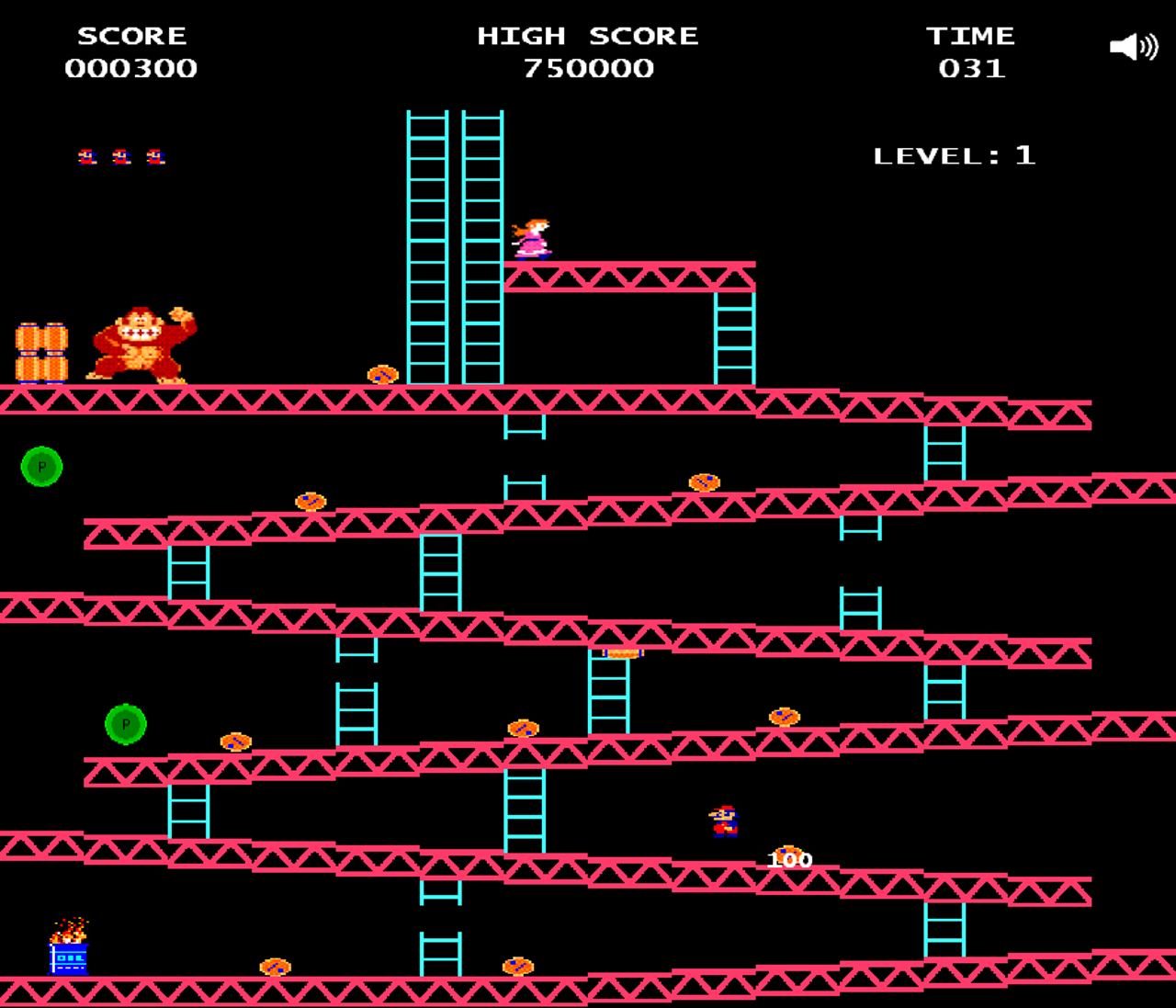
Wide-open eyes, luxurious mustache and nose made Mario recognizable, but in order to see it all on a miniature sprite, the little man had to be endowed with Carlson's anatomy. Well, he changed his profession thanks to his former classmate Shigeru Miyamoto: once in a personal conversation, a friend of the game designer noted that Mario's suit was decidedly not suitable for a carpenter, but it would be just right for a plumber. This is how, thanks to a series of accidents and imperfect technology, the most popular character in the history of video games was born, who later became the mascot of Nintendo.

At the time of the completion of development, no one yet suspected how successful the new game would be. Since the fate of the American subsidiary of Nintendo hung in the balance, the "production" of arcade machines was deployed all in the same warehouse. Three employees of the company (additional staff was an unaffordable luxury) were assigned to install new software cards in an unclaimed 2,000 Radar Scope slot machines and replace stickers on the front panels. However, very soon Nintendo faced another problem: the demand for the new game was so great that the company could hardly cope with its satisfaction.
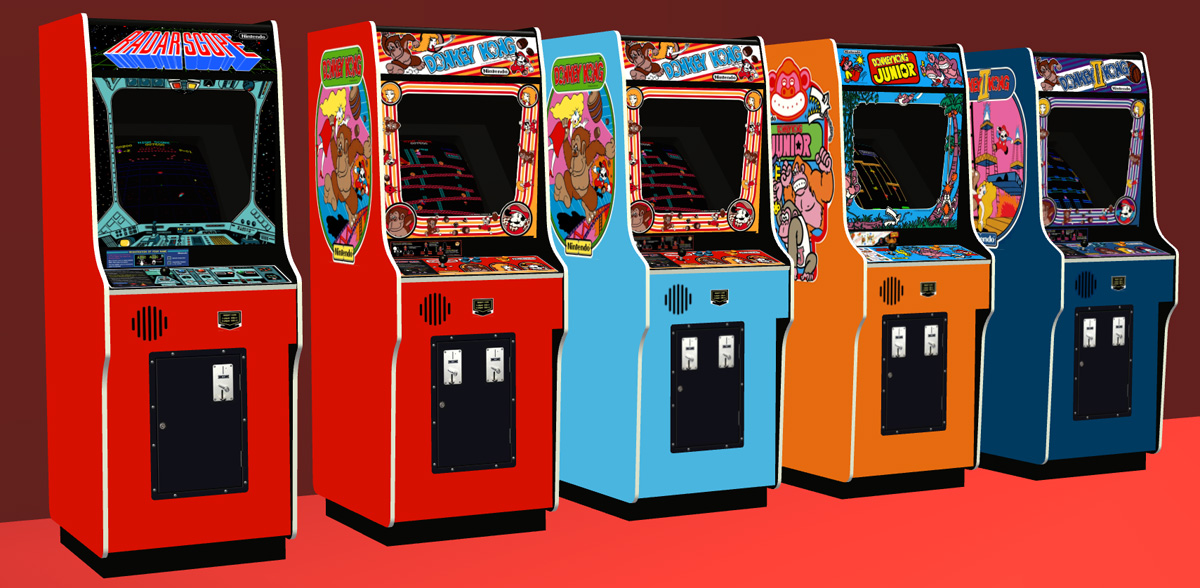
Arcade machines Radar Scope, Donkey Kong and its sequels: find 10 differences
Against the background of the success of the original, the sequel did not take long: in 1982 the game Donkey Kong Jr. ("Donkey Kong Jr."), in which Mario has already acted as the main antagonist (for the first and last time). According to the plot of the game, our then carpenter built a solid cage for a giant gorilla, and the player controlled the nephew of a humanoid bully who had to rescue a negligent relative from captivity.

The next coming of Mario to the screens of slot machines took place in 1983 and dotted all the i's. The charming barbel officially changed his profession, becoming a plumber, and the action of the game was transferred from the scaffolding to the ground. Now Mario had to clear the city sewers from out of nowhere aggressive turtles, crabs and giant flies, and in a rather non-trivial way: when the enemy appeared on the platform, the character had to hit it from below in a jump and then knock the enemy out of the screen with a powerful kick while he helplessly lying on his back. If you do not have time to do this, the enemy passed to the next stage, becoming more aggressive and fast. And our heroic barbel was helped in this difficult task by his twin brother Luigi, who wore a green overalls.

The next adventure of the Mario brothers (yes, Mario, among other things, also the name of the main characters, which Shigeru Miyamoto officially confirmed ... only in 2015, during the celebration of the 30th anniversary of the franchise) was not long in coming: in 1985 the company released full platformer Super Mario Bros. for the home gaming system Nintendo Entertainment System (Famicom). The game was a resounding success and even made it into the Guinness Book of Records, becoming the best-selling title in the history of the industry: cumulative circulation of Super Mario Bros. exceeded 40 million copies.

As for the plot, little has changed here since Donkey Kong: Miyamoto again used the "girl in trouble", with the only difference that now our plumber was not saving anyone, but the princess of the Mushroom Kingdom Peach (from the English Peach - "peach" ), and his opponent was the formidable King Bowser, the leader of the evil Koopa tortoises. But on filling Super Mario Bros. could give odds to almost any game of those times.
Nintendo's engineers managed to accomplish the impossible and squeeze the maximum out of the limited resources of the console, which made it possible to create a truly exciting and varied game, which at the time of release simply had no worthy analogues. Super Mario Bros. included 32 levels, 4 in each of 8 unique worlds, and its combat system involved several ways to eliminate enemies at once: Mario could jump on the enemy from above, hit the platform on which he was from below, use a virtual opponent as a weapon (the turtle hidden in its shell could be launched at other opponents, and it could bounce off the wall and hit Mario himself) or destroyed with a fireball (for this, a special bonus had to be picked up).
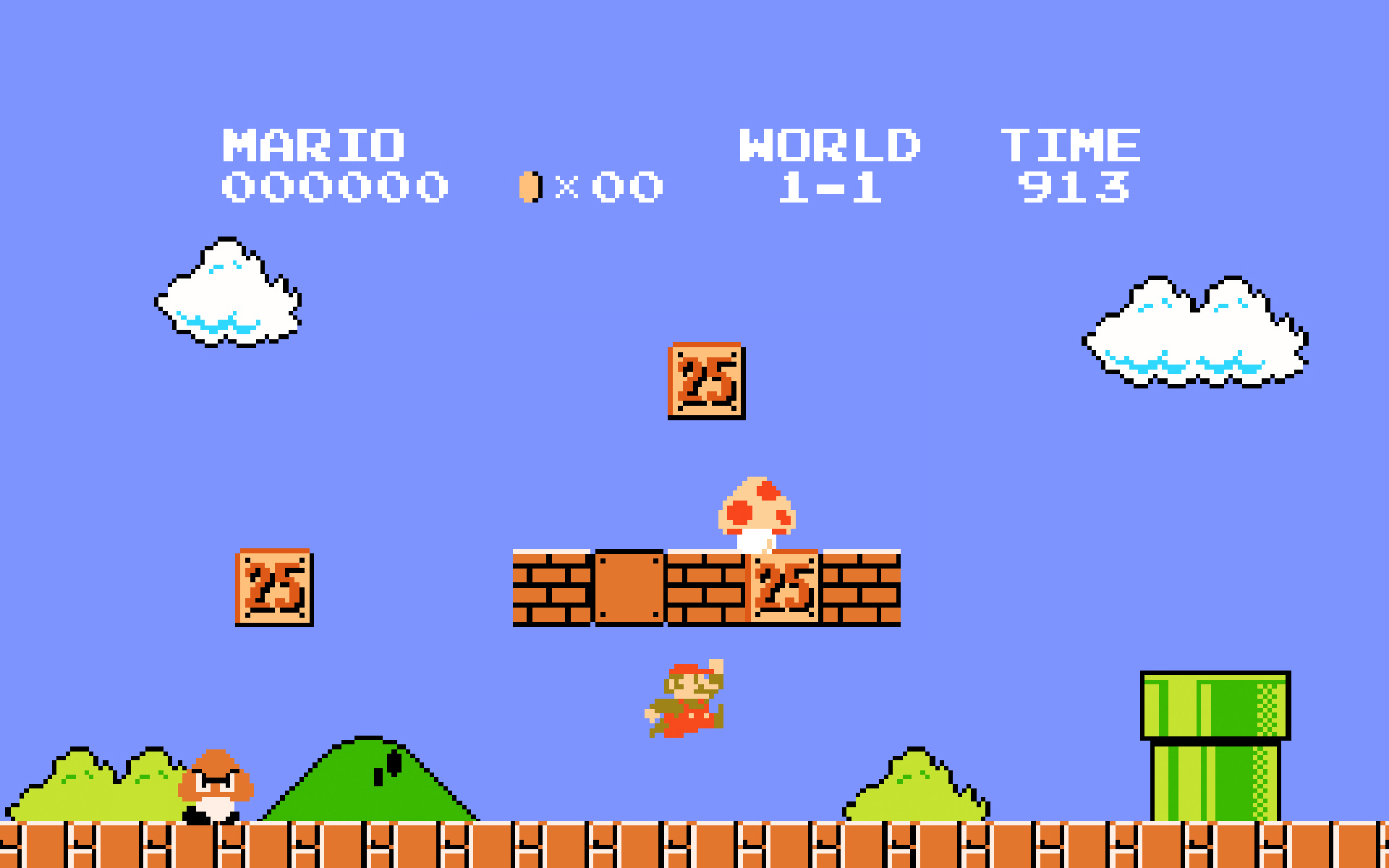
The limited number of lives (Mario, among other things, died from one hit) made the platformer really hardcore, and the countdown timer added dynamics, motivating the player to constantly move forward, navigate what was happening on the go and improve their own skills. Combined with destructible environments and many secrets, most of which could only be discovered by chance, all of this provided an incredible richness of the gameplay.
Well, after successfully completing Super Mario Bros. a mode of increased difficulty was opened, bringing additional variety to the gameplay:
- there were more opponents, they began to move much faster;
- stunned enemies almost immediately came to their senses;
- all Goomba mushrooms were replaced by the more dangerous Buzzy beetles;
- - , ;
- , ;
- .
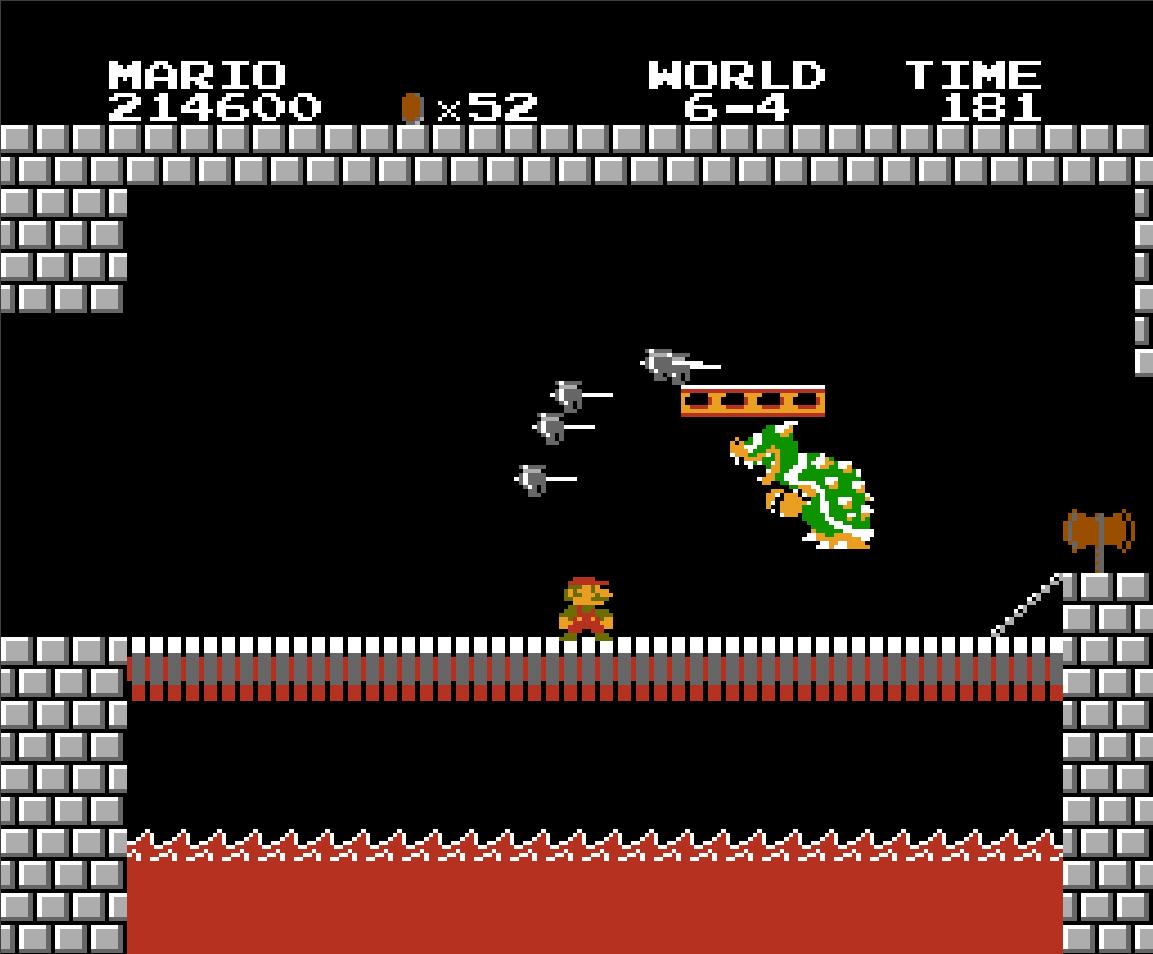
Super Mario Bros. became a true icon of the industry, outlining the fundamental foundations of the genre, which is why it is the date of its release that is considered to be the official birthday of Mario. And the heroes of the game, led by an excellent plumber, to this day wander from project to project, continuing to delight players around the world.
However, Nintendo has not forgotten about the other characters that brought the company worldwide fame. The rustic Donkey Kong was finally re-educated (apparently, being in a cage built by Mario had a beneficial effect on the primate), having received his own franchise. And the beauty Paulina later appeared in Nintendo games many times and was even able to build a political career, becoming the mayor of New Donk: in this capacity, she can be found in Super Mario Odyssey.
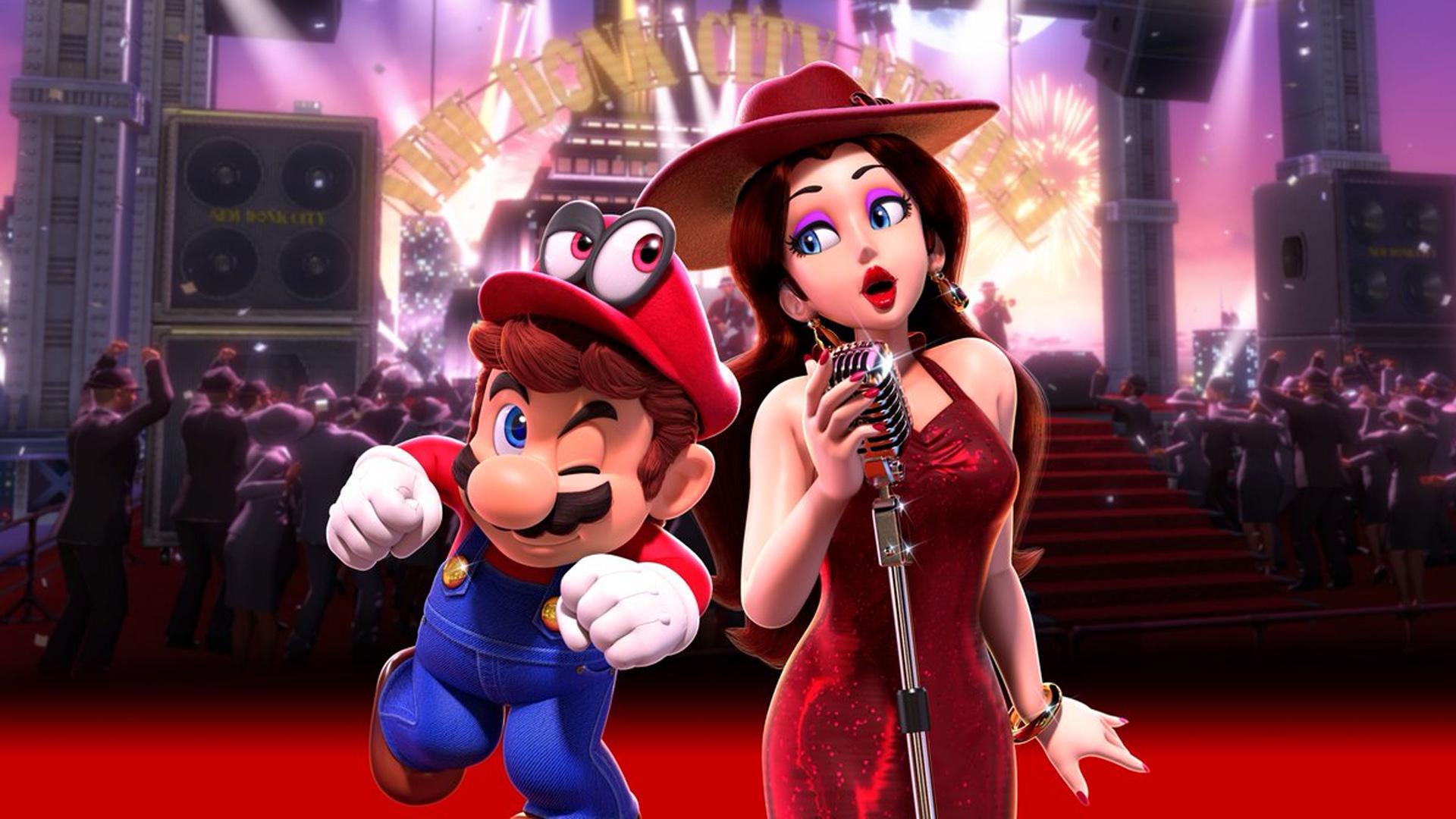
And Paulina sings well
A holiday with tears in your eyes
Alas, in our time, a rare barrel of honey does without a fly in the ointment, and even such a significant event as the 35th anniversary of Mario was no exception. Although, it would seem, who could spoil such a holiday, except, of course, Nintendo itself? But the irony lies in the fact that it was the "big N" who did not fail to take advantage of such a fortunate opportunity.
Let's dream up. You are the owner of one of the richest companies in the gaming industry, and you own the most successful franchise in video game history. The brand's key mascot turns 35. What can you think of for such an occasion? Yes, literally anything. For example, to release a limited edition Nintendo Switch with a unique design and an autograph engraved on the body of Shigeru Miyamoto, which can take pride of place on the shelf of any collector. Or offer fans worthy remasters of classic games in the series, made at the level of Super Mario Odyssey (when it comes to 3D games) or New Super Mario Bros. U Deluxe (in terms of traditional side-scrolling platformers). Nintendo decided to take the second path: on September 18, 2020, the official release of the Super Mario 3D All-Stars compilation took placewhich included remasters of Super Mario 64 (1996), Super Mario Sunshine (2002) and Super Mario Galaxy (2007). That's just to call them worthy language does not turn, and the word "remasters" should be put in quotes.

Strictly speaking, we are not even really looking at ports. As the data miner OatmealDome found out even before the official release, only Super Mario Galaxy is a port with a stretch: in this case, the developers really recompiled the code of the original game, adding support for nVidia Tegra X1, but natively, the APU only handles game logic, while for rendering and even the emulator codenamed hagi is responsible for playing sound. At the same time, Super Mario 64 and Super Mario Sunshine were not redesigned at all: if you wish, you can run them even now on the same Dolphin.
All graphics improvements (very modest, it should be noted) and translation fixes are applied on the fly, just like it is implemented in free emulators of classic consoles, although the latter do their job much better than the proprietary crutch from Nintendo. And only the main menu of the collection is original: it is based on the LunchPack, which was also used in the games of the Splatoon series, Super Mario Maker and Animal Crossing.
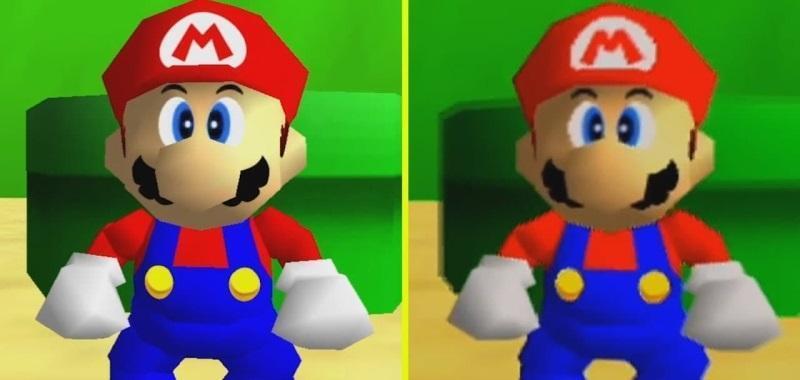
In Super Mario 64, textures are slightly improved and the render resolution is increased, but this is the limit.
Thus, in fact, we are not dealing with remasters, but with the most "lazy" retexture, where practically nothing has been changed. Against the background of the recent Crash Bandicoot N. Sane Trilogy from the "main greedy" of the industry Activision or the same Medievil from Sony, such an attitude towards loyal fans can be called frankly piggy, especially given the round date.
However, you don't even have to go to other publishers for positive examples, because last year Nintendo clearly demonstrated that it can make a gorgeous remake of a classic game in a modern wrapper. We are talking, of course, about the wonderful The Legend of Zelda: Link's Awakening in every sense.

The Legend of Zelda: Link's Awakening - an exemplary remake from Nintendo
The original project was released back in 1993, becoming the first game in the franchise to be released on the Game Boy handheld console. A remake of the 2019 sample was recreated from scratch in full 3D, and with some kind of superhuman attention to detail: literally every bush remained in its rightful place. And although many critics reproached the game with an outdated game design, in practice The Legend of Zelda: Link's Awakening can be called an exemplary remake: by launching this game, you will experience exactly the same sensations that the original gave you, adjusted for modern visual technologies, which, however, did not spoil either the gameplay or the "lamp-like" atmosphere.

Even the Easter eggs remained in their places
Against the background of The Legend of Zelda: Link's Awakening, the situation with Super Mario 3D All-Stars looks awkward, as if someone inside the company deliberately sabotaged Mario's anniversary. However, if you think logically, then everything falls into place, although the conclusions for the gaming community will not be the most comforting.
Nintendo gave you and me a lot of great games (and still continues to develop them), but today it's primarily a huge corporation, whose actions are determined by economic expediency. Having gathered around itself a multimillion-dollar army of fans, the company very transparently indicated its intention to monetize its own reputation assets. And such a contrasting quality of products only clearly confirms this. Let's compare The Legend of Zelda: Link's Awakening from 1993 to 2019.

In the original, if Nintendo released it unchanged, only by adapting it to the Switch screen resolution and adding colored sprites, today only a nostalgic gamer could play, who caught the same release that was released 27 years ago, or a later reissue of 1998 - The Legend of Zelda: Link's Awakening DX, released for Game Boy Color. And since this game is not even a numbered part of the franchise (its action takes place not in the kingdom of Hyrule, but on the island of Koholint, and you will not find Zelda herself here), the "lazy" port could not attract the attention of either new players or those who who only recently joined the legendary series. Therefore, the big N made every possible effort to make a remake of the candy, which would be of interest to a fairly wide range of players, while thoroughly recreated the original locations,adding a great orchestral soundtrack and keeping the spirit of the original.
The situation with Super Mario 3D All-Stars is diametrically opposite. Of the whole trinity, only Super Mario 64 looks morally outdated, but given the popularity of the franchise (and even those who are not interested in video games in principle know about the mustachioed plumber) and the significance of the listed titles, even this game will be happy to buy and play again, since core- the gameplay of all three games is such that they will be relevant in another 10 years. It turns out that there is no need to strain: it is enough to screw the emulator to the source distributions, create a new menu for the collection - and the trick is in the bag!
“And if they don’t take it, we’ll turn off the gas,” one of the company's top managers thought to himself, deciding to add exclusivity to an already exclusive project, and signed an order that the “remasters” would be on sale only for a limited time - until March 31, 2021 inclusive. Already in April, Super Mario 3D All-Stars should disappear from the eShop forever, and soon the only legal way to play this collection will be to purchase a physical copy from your hands, because an additional print run of cartridges is also not planned. So everyone who is looking for reliable assets for investment, we recommend that you take a closer look at the purchase of this edition, because over time it will only get more expensive.
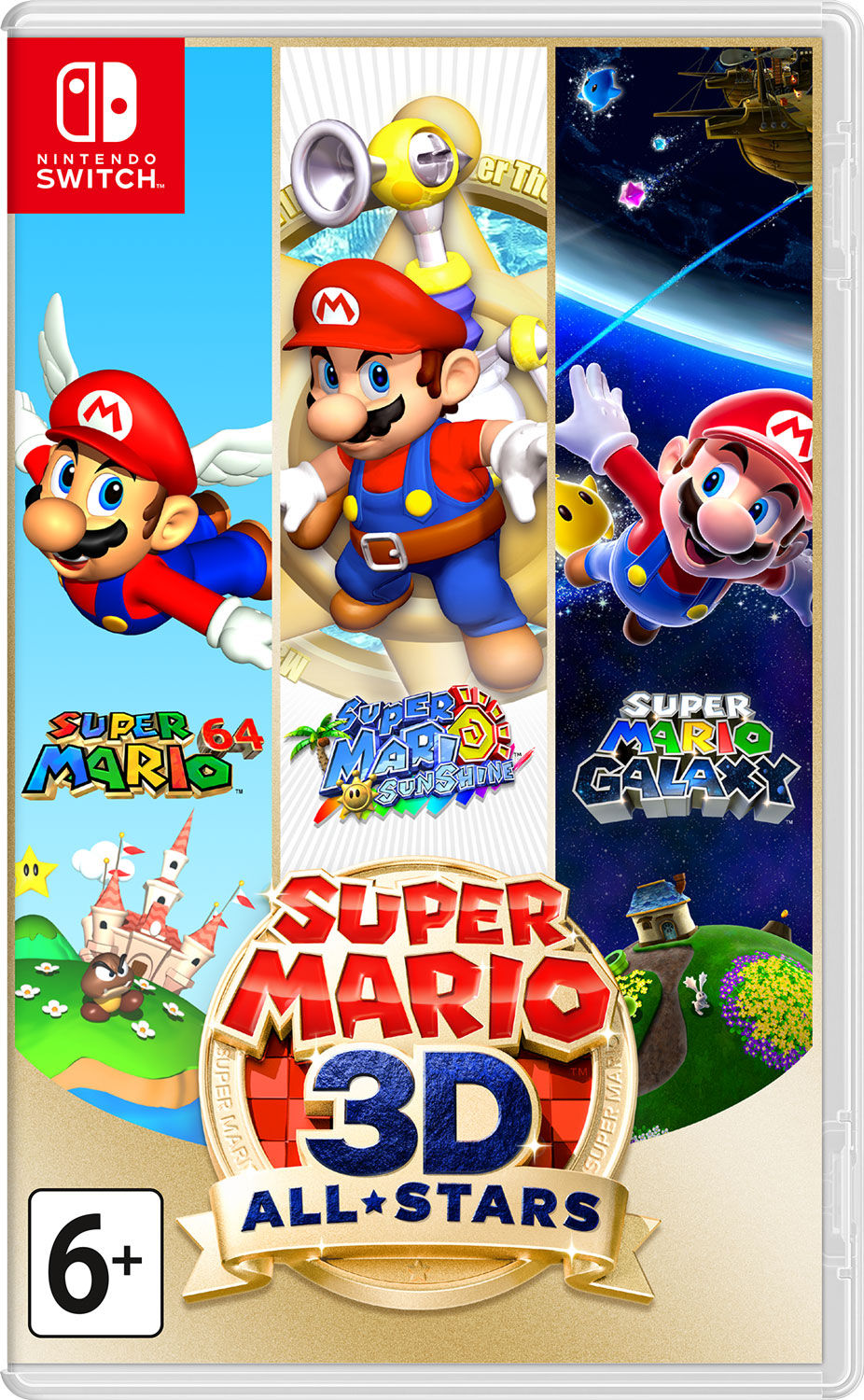
Super Mario 3D All-Stars - the most reliable investment of your money
if you think that after all this, players began to massively boycott the release, it is deeply mistaken: at the stage of pre-order Super Mario 3D All-Stars took second place in the ranking of Amazon best-selling (at the moment When the article was written, the collection was located on the 7th position), and prices from dealers at the start of pre-sales reached $ 350 . In other words, people began to act exactly as expected at Nintendo: fearing that there would not be enough physical copies for everyone, Mario fans began to urgently buy cartridges. And they continue to this day: in the British chart Super Mario 3D All-Stars firmly holds the first place, and sales of the Nintendo Switch itself after the release of the collection reached 146 thousand devices, which is 90% more than in September last year.
And although this time it was not without review-bombing, it had little effect: 6.5 points in the user rating and angry reviews on Metacritic practically did not affect sales.

Metacritic users actively complain about the quality of the "remasters", but Nintendo does not pay attention to it
On the other hand, since Nintendo in the current generation began to save on consoles and at the same time is not even afraid of litigation (and on September 23, the second a lawsuit related to the quality of joikons, this time drawn up by the French consumer association UFC-Que Choisir), then the use of vicious practices in the field of digital distribution is not surprising.
By the way, if we are talking about hardware, here's another interesting fact: the internal memory of the Nintendo Switch is not enough to hold all the games about Mario and his friends that are officially available on this platform. Let's count!
A game |
Volume, MB |
Super mario odyssey |
5747 |
New Super Mario Bros. U Deluxe |
2572 |
Paper Mario: The Origami King |
6662 |
Mario Kart 8 Deluxe |
7059 |
Mario Tennis Aces |
2491 |
Luigi's Mansion 3 |
7554 |
Mario + Rabbids |
2980 |
Super Mario Party |
2885 |
Super Mario Maker 2 |
3135 |
VS. SUPER MARIO BROS. |
98 |
« 2020 » |
6574 |
Super Mario 3D All-Stars |
5013 |
|
52770 |
About 53 gigabytes is a very modest value today, even for a smartphone, but not for a Nintendo Switch. The hybrid console has 32GB of built-in storage, with only 25.4GB actually available for storage, since the rest of the space is occupied by the operating system. So it turns out that everyone who wishes to celebrate the anniversary of the heroic plumber with dignity by replaying their favorite games will first have to get a SanDisk for Nintendo Switch memory card with at least 64 GB (or better for all 128, taking into account future releases). In this case, you can install the distributions of the listed games on a microSD card, and leave the internal memory of the console for saves, screenshots and videos.

The funny thing is that when using a memory card, you practically do not lose in performance, as would be the case with a smartphone. The thing is that the Toshiba THGBMHG8C2LBAIL eMMC 5.1 NAND chip is installed inside the Nintendo Switch, the maximum theoretical bandwidth of which is 600 MB / s in read operations and 125 MB / s when writing files. Although at the time of the release of the console, the UFS 2.0 standard was already in full swing, capable of boasting twice the performance (1200 MB / s), Nintendo naturally ignored this fact. Moreover, the hybrid console does not use 100% even the capabilities of eMMC 5.1, which was clearly demonstrated in its research by Digital Foundry.
As tests have shown, when using memory cards with a reading speed of 100 MB / s (and this is exactly the performance that SanDisk for Nintendo Switch is characterized by), the download duration of games increases by no more than 14%. For example, in the case of a fairly heavy Legend of Zelda: Breath of the Wild, the difference is only 5 seconds maximum, taking into account that it takes about 30 seconds to load each location. At the same time, microSD cards turn out to be about 6% faster compared to branded cartridges, so, all other things being equal, you will not notice any difference in loading times.
And there is no doubt about the reliability of such a solution. Traditionally, SanDisk products have undergone the most rigorous environmental and human stress tests, and the microSD card line for Nintendo Switch is no exception. Flash cards of the series can withstand drops from a height of up to 5 meters onto a concrete floor, remain operational even after 72 hours of being in fresh or salt water at a depth of 1 meter, are protected from the effects of X-rays and static magnetic fields with an induction force of up to 5000 G. will also function properly at extremely low (up to -25 ºC) and extremely high (up to +85 ºC) temperatures for at least 28 hours. Thus, SanDisk memory cards have every chance to outlast the console,it's no coincidence that every model comes with a lifetime warranty.

But no matter how good SanDisk microSD cards are, the very need to purchase them cannot but depress. Moreover, even in the last generation, Nintendo offered buyers two options for Wii U: Basic with an 8 GB drive and Premium, which received 32 gigabytes of internal storage. Of course, for a home console, the issue of disk space was not as acute, because an external hard drive with a capacity of up to 2 terabytes could be connected to the Wii U, but the very fact of the choice allowed us to hope that in the current generation we will be offered several consoles in different price categories - let's say with 32, 64 and 128 GB of memory on board. But the miracle did not happen, and it is unlikely to happen, especially if you consider that Nintendo has not yet solved the problem with the joycon.
However, let's wrap up this story on a positive note, as the Super Mario Bros. 35th Anniversary Direct Nintendo has made two very interesting announcements. The first of these is the imminent release of Super Mario 3D World to Nintendo Switch. The Wii U port of the hit will receive support for online co-op (the original only had local co-op), the new Bowser's Fury DLC, and improved graphics. And if the last point after Super Mario 3D All-Stars causes only a skeptical grin, then there is no doubt about the quality of additional content (after all, Nintendo has never saved on talented game designers), and the opportunity to play with friends online is definitely worth buying. this game. The release will take place on February 12, 2020.
The second announcement looks even more interesting and at the same time causes bewilderment: why didn't anyone think of this before? We are talking, of course, about Mario Kart Live: Home Circuit - an AR race for the Nintendo Switch. Included with the game will be a miniature radio-controlled car with a built-in camera that transmits an image to the console screen. Switch, in turn, will create augmented reality in real time, adding track markings, virtual rivals and various bonuses to the broadcast image. At the same time, the game supports local multiplayer for four players, thanks to which it can become an excellent family entertainment, or maybe, with which Bowser is not joking, and make another revolution in the genre! The release of Mario Kart Live: Home Circuit will take place on October 16.